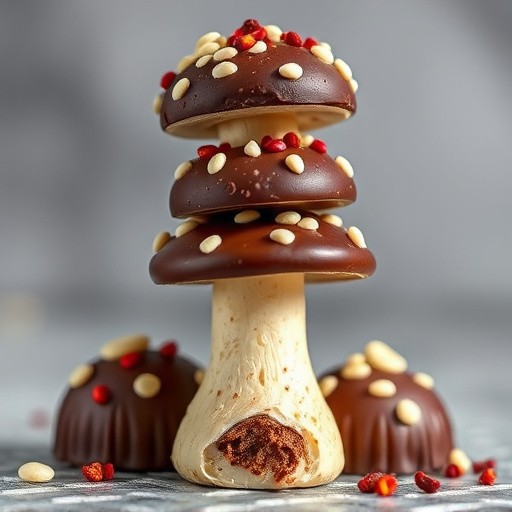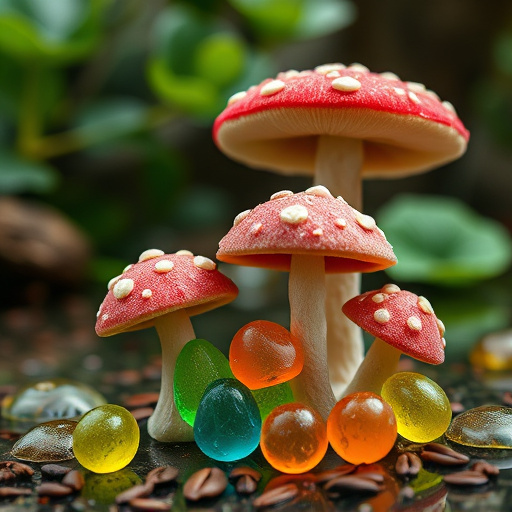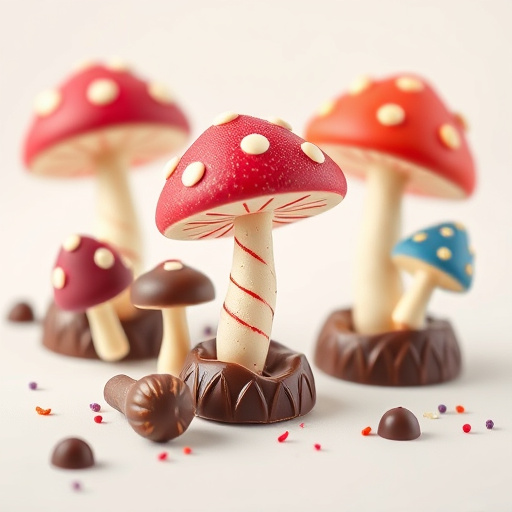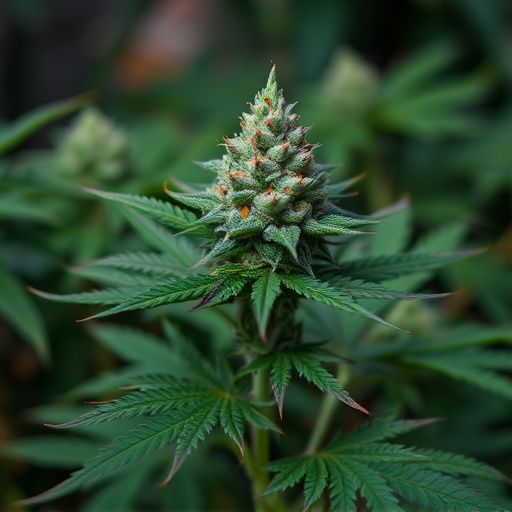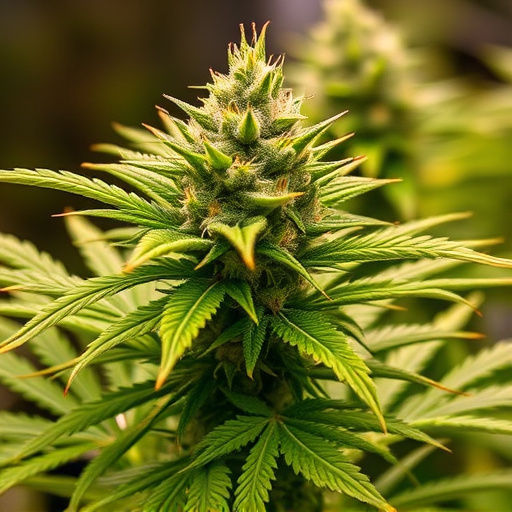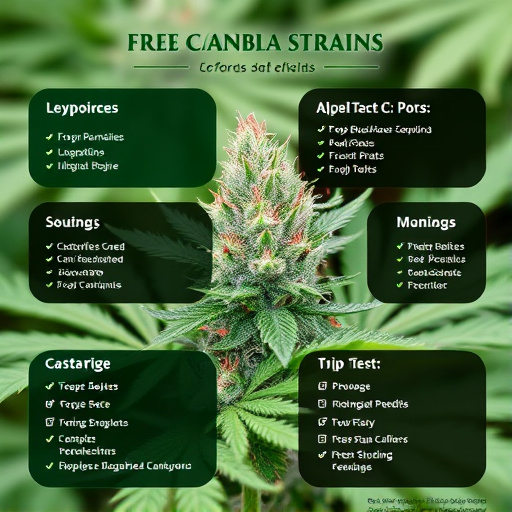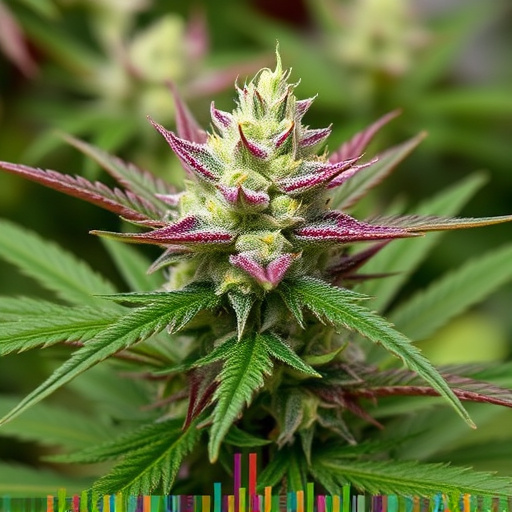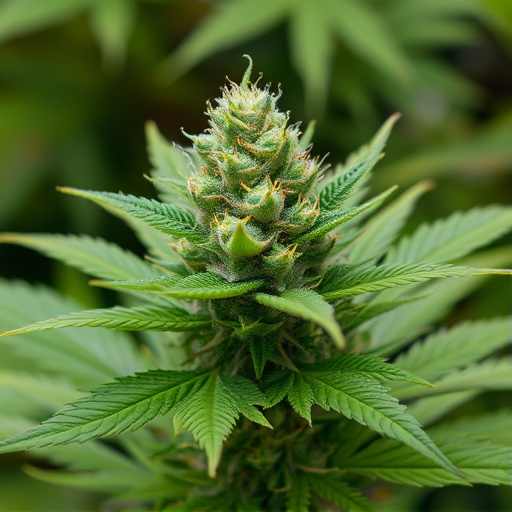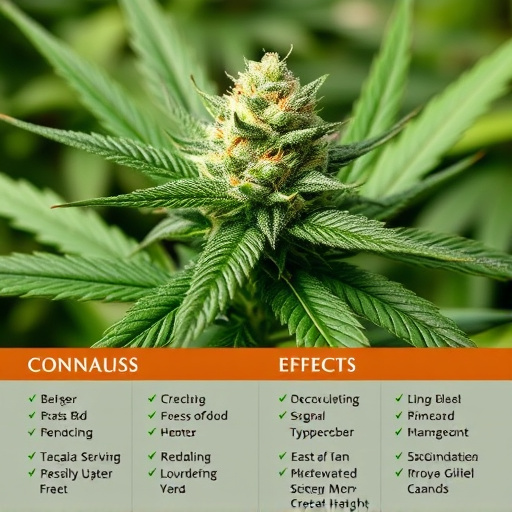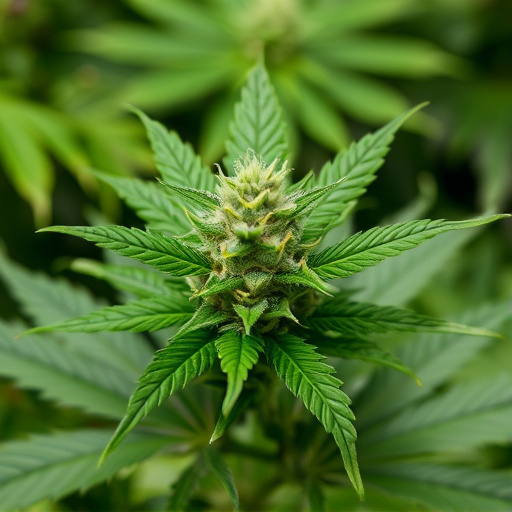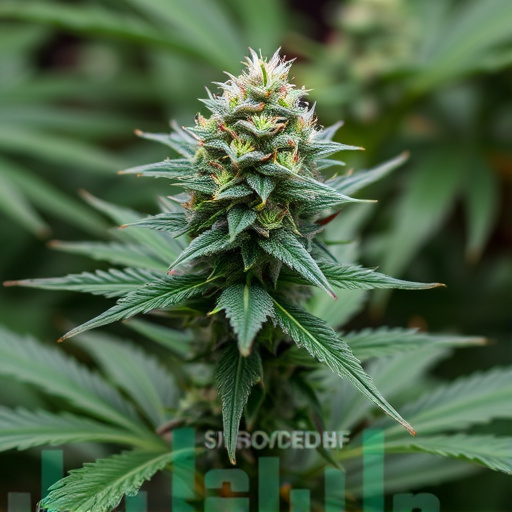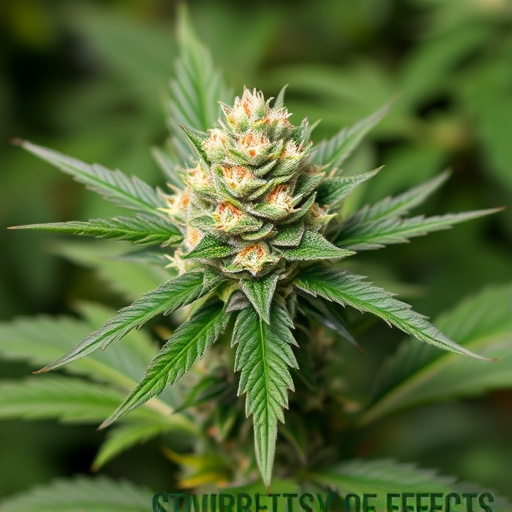Cannabis flower's impact on mood and stress is mediated by its compounds THC and CBD, which interact with the endocannabinoid system (ECS). THC binds to CB1 receptors in the brain, affecting serotonin and dopamine levels, potentially leading to changes in mood and increased sociability but also heightened stress or anxiety. In contrast, CBD doesn't bind directly to CB1 receptors but interacts with other ECS pathways, reducing anxiety by modulating serotonin receptors. Different cannabis strains, such as Sativa, Indica, and Hybrid, vary in THC and CBD concentrations, producing diverse effects on users. Terpene profiles within each strain further influence mood and therapeutic benefits. Understanding these compounds' interplay with the ECS is crucial for choosing suitable strains and dosages based on desired outcomes. However, regular cannabis use may have negative mental health impacts, especially on individuals prone to conditions like schizophrenia or anxiety disorders.
Explore the intricate relationship between cannabis flower and mood regulation. This comprehensive guide delves into how cannabis compounds interact with the endocannabinoid system, shedding light on its potential stress-relieving and mood-enhancing effects. We analyze various cannabis strains and their unique profiles, offering insights into their differing impacts. Additionally, discover individual variations in response, highlighting both potential benefits and risks associated with cannabis consumption.
- Understanding Cannabis Compounds and Their Interaction with the Endocannabinoid System
- The Impact of Different Cannabis Strains on Mood and Stress Reduction
- Potential Benefits, Risks, and Individual Variations in Response to Cannabis Flower Consumption
Understanding Cannabis Compounds and Their Interaction with the Endocannabinoid System
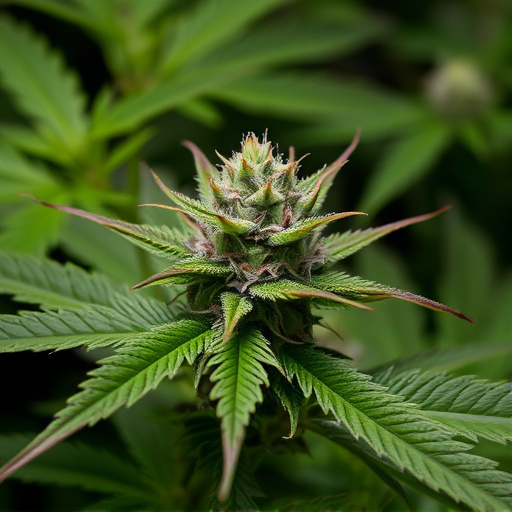
Cannabis flower’s impact on mood and stress stems from its complex compounds, primarily tetrahydrocannabinol (THC) and cannabidiol (CBD), which interact with the endocannabinoid system (ECS). The ECS is a network of receptors located throughout the brain and body that modulate various physiological processes, including mood, memory, and stress response. THC, known for its psychoactive effects, binds to CB1 receptors in the brain, influencing serotonin and dopamine levels, which are linked to pleasure and reward. This interaction can lead to alterations in mood, increased sociability, and, in some cases, enhanced stress or anxiety, especially with high-THC strains.
On the other hand, CBD doesn’t bind directly to CB1 receptors but instead interacts with other receptors and pathways within the ECS. It is believed to have anxiolytic (anxiety-reducing) properties by modulating serotonin receptors and potentially reducing the impact of stress hormones. Different cannabis strains vary in THC and CBD concentrations, leading to diverse effects on users. Understanding these compounds and their interplay with the ECS helps explain why cannabis can affect individuals differently, highlighting the importance of choosing strains and dosages suitable for specific purposes and desired outcomes, whether for relaxation or mood enhancement.
The Impact of Different Cannabis Strains on Mood and Stress Reduction
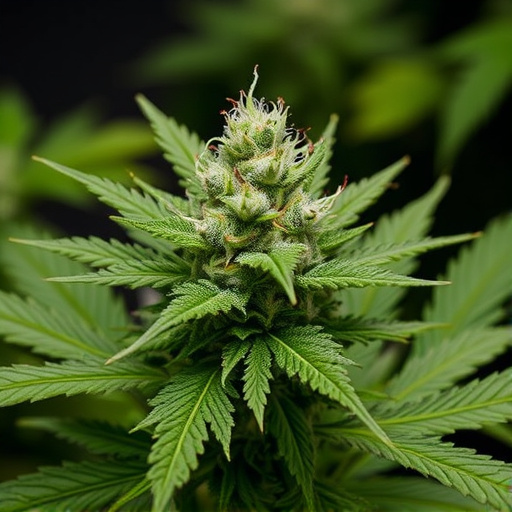
Cannabis flowers offer a diverse range of experiences, with different strains producing varying effects on mood and stress. Sativa strains, known for their uplifting and energizing properties, can help alleviate symptoms of depression and anxiety by promoting a sense of well-being and focus. On the other hand, Indica varieties are renowned for their calming and relaxing effects, making them popular choices for managing insomnia and chronic stress.
Hybrid cannabis strains combine traits from both Sativa and Indica plants, resulting in unique experiences. Many hybrid strains aim to balance mood elevation with relaxation, offering a more versatile effect for users seeking stress relief without feeling overly sedated. The specific terpene profiles within each strain also play a significant role in their effects on mood and stress reduction, contributing to the overall experience and potential therapeutic benefits.
Potential Benefits, Risks, and Individual Variations in Response to Cannabis Flower Consumption
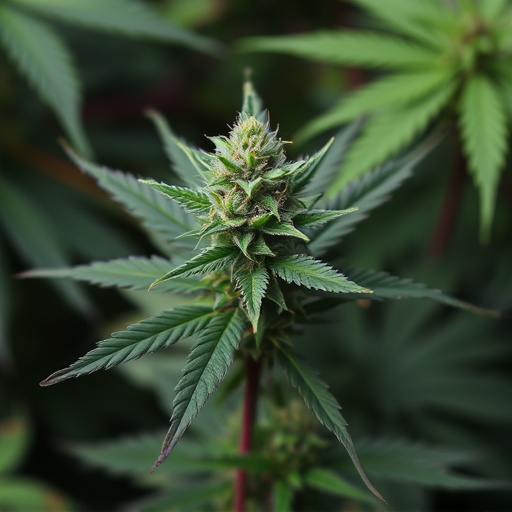
Cannabis flower, with its diverse range of chemical compounds known as cannabinoids, offers potential benefits for managing mood and stress. Many users report a sense of relaxation and calmness after consumption, attributed to the interaction between THC (tetrahydrocannabinol) and other cannabinoids with the endocannabinoid system in the body. This can help alleviate symptoms of anxiety and depression. Certain cannabis strains and effects are particularly renowned for their mood-boosting properties, containing higher levels of CBD (cannabidiol) or specific terpene profiles that promote a sense of well-being.
However, it’s crucial to acknowledge the risks and individual variations in response. While cannabis can provide short-term relief, regular use may lead to potential negative effects on mental health, especially in those predisposed to conditions like schizophrenia or anxiety disorders. The impact of cannabis strains and effects varies widely; what induces a soothing experience for one person might stimulate anxiety in another. Factors such as dosage, method of consumption, and individual tolerance play significant roles. Understanding these variations is essential to ensuring a safe and effective exploration of cannabis’s potential therapeutic benefits.
Cannabis flower’s impact on mood and stress is a complex interplay between its compounds and the endocannabinoid system. Different cannabis strains offer diverse effects, with some promoting relaxation and stress reduction. However, individual responses vary, highlighting the need for personalized approaches to cannabis consumption. Understanding these variations and the underlying mechanisms can help users navigate the potential benefits and risks of different cannabis strains and make informed decisions regarding their well-being.
